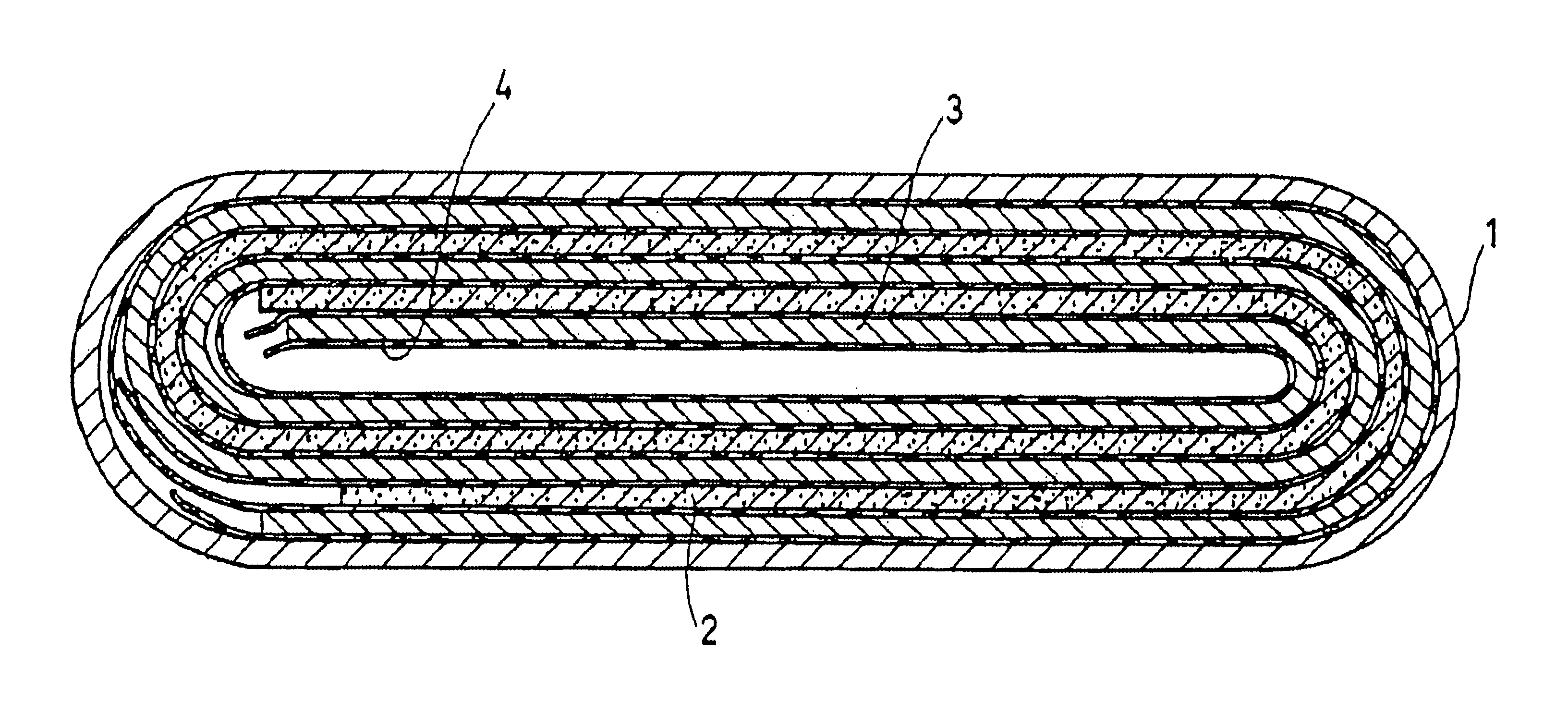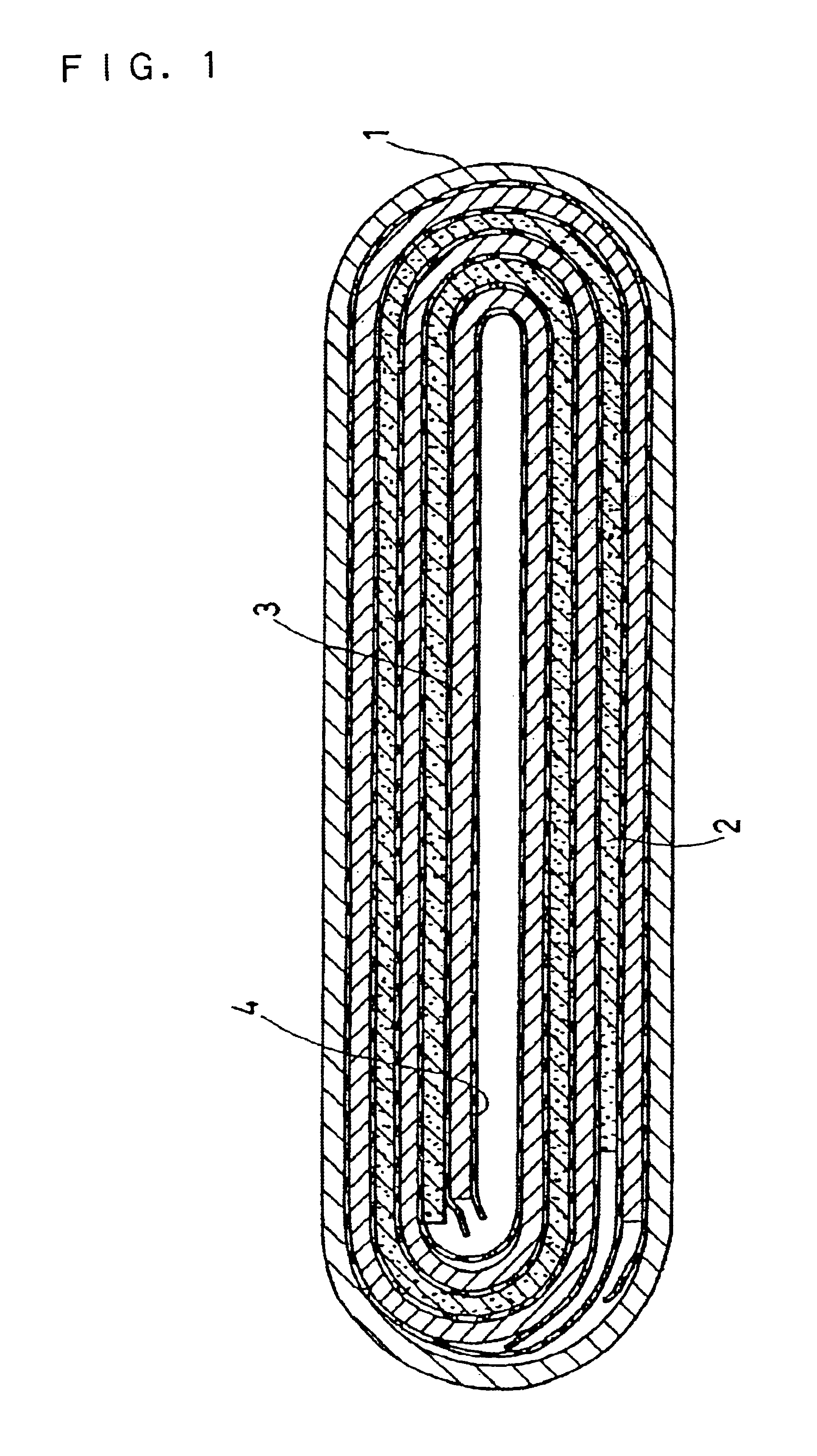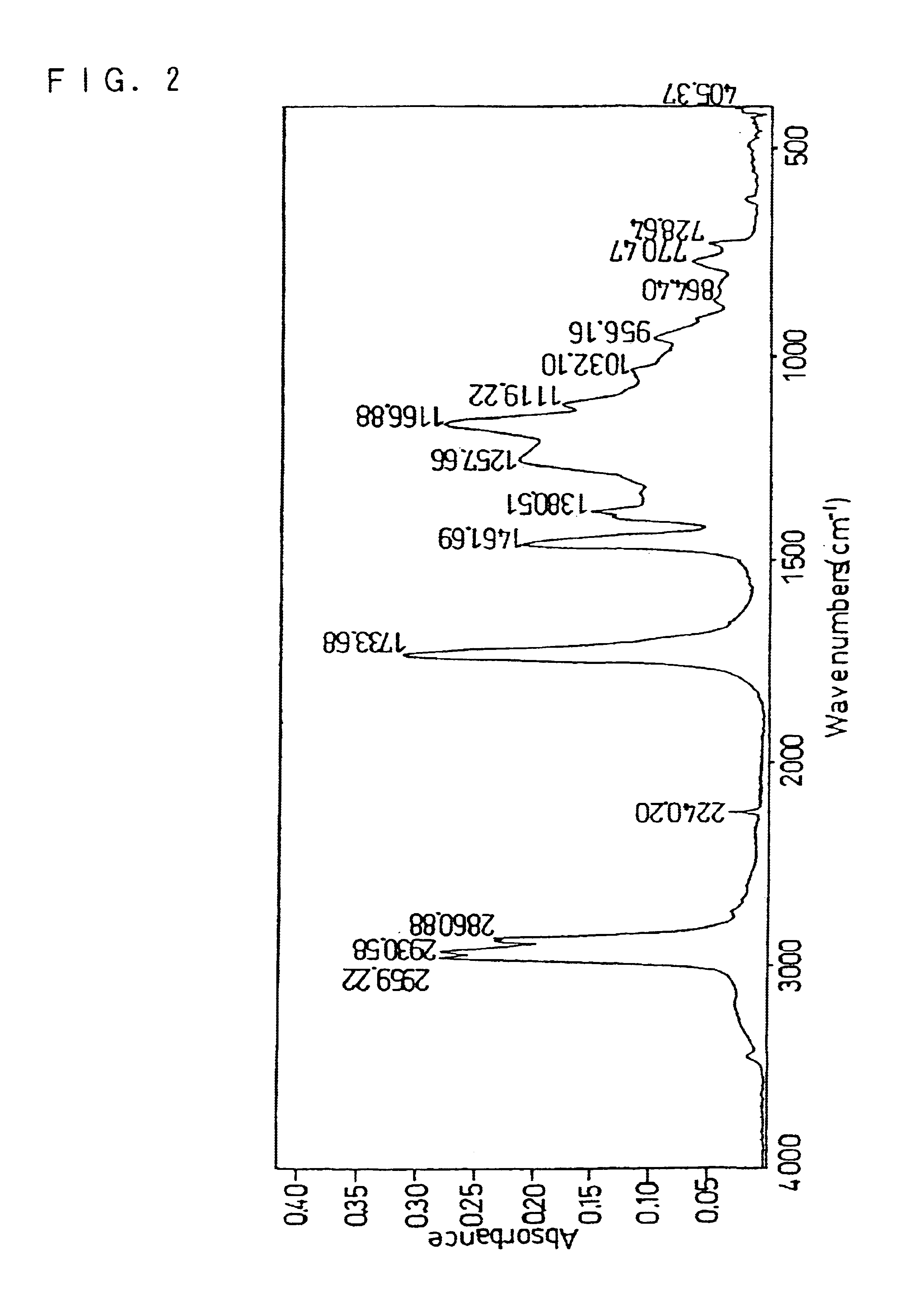Non-aqueous electrolyte secondary battery and positive electrode for the same
- Summary
- Abstract
- Description
- Claims
- Application Information
AI Technical Summary
Benefits of technology
Problems solved by technology
Method used
Image
Examples
example 1
One hundred parts by weight of the active material LiCoO2, 0.5 part by weight of a particulate binder having a mean particle size of 0.2 μm, 0.3 part by weight of a thickening agent, 2 parts by weight of acetylene black, 2 parts by weight of flaky graphite, and a proper amount of N-methyl-2-pyrrolidone were blended together, to obtain a positive electrode mixture paste.
As the particulate binder, this example used an elastic copolymer comprising a 2-ethylhexylacrylate unit, an acrylic acid unit and an acrylonitrile unit (BM500B, manufactured by Nippon Zeon Co., Ltd.). FIG. 2 shows an absorption spectrum of BM500B obtained by the FT-IR spectrometry.
In FIG. 2, the absorption peak observed near 2240 cm−1 is attributed to the C≡N stretching vibration in the acrylonitrile unit, while the absorption peak observed near 1733 cm−1 is attributed to the C═O stretching vibration in the 2-ethylhexylacrylate unit and the acrylic acid unit. The intensity of the absorption peak attributed to the C═O...
example 2
Positive electrode sheets “B” to “G” and batteries “B” to “G” were produced in the same manner as in EXAMPLE 1, except that the density of the active material LiCoO2 in the positive electrode mixture was varied as shown in Table 1. These positive electrode sheets and batteries were evaluated in the same manner as in EXAMPLE 1. The results are shown in Table 1.
Table 1 shows that when the active material density is 2.9 g / ml, a battery having a sufficient life cannot be obtained and that when the active material density is 4.2 g / ml, each of the characteristics as shown in the Table 1 deteriorates. Also, it is considered that when the active material density is too high, the positive electrode sheet is prone to collapse. This indicates that the suitable range of the active material density is 3.0 to 4.0 g / ml. Further, Table 1 shows that 3.4 to 3.7 g / ml is more preferable as the range of the active material density. In Table 1, as the active material density is higher, the oblateness upo...
example 3
Positive electrode sheets “H” to “L” and batteries “H”to “L” were produced in the same manner as in EXAMPLE 1, except that the amount of the binder in the positive electrode mixture was varied as shown in Table 1 and that the density of the active material LiCoO2 was adjusted to 3.4 g / ml. These positive electrode sheets and batteries were evaluated in the same manner as in EXAMPLE 1. The results are shown in Table 1.
Table 1 shows that when the amount of the particulate binder in the positive electrode mixture is 0.4 or more part by weight per 100 parts by weight of the active material, a battery having an excellent high-rate discharge characteristic and long life can be obtained. When the amount of the particulate binder is 2 or more parts by weight, the high-rate discharge characteristic deteriorates slightly, thereby indicating that 0.4 to 2 parts by weight, particularly 0.4 to 1 part by weight, is preferable.
PUM
 Login to View More
Login to View More Abstract
Description
Claims
Application Information
 Login to View More
Login to View More - R&D
- Intellectual Property
- Life Sciences
- Materials
- Tech Scout
- Unparalleled Data Quality
- Higher Quality Content
- 60% Fewer Hallucinations
Browse by: Latest US Patents, China's latest patents, Technical Efficacy Thesaurus, Application Domain, Technology Topic, Popular Technical Reports.
© 2025 PatSnap. All rights reserved.Legal|Privacy policy|Modern Slavery Act Transparency Statement|Sitemap|About US| Contact US: help@patsnap.com



